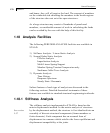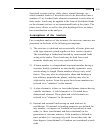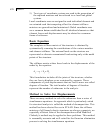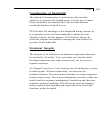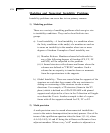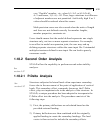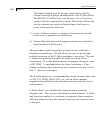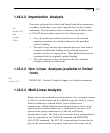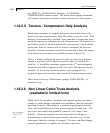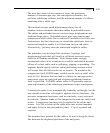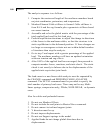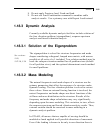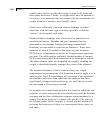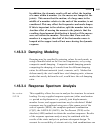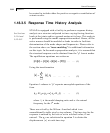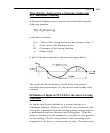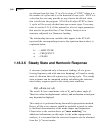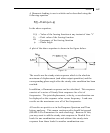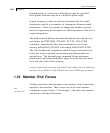
Section 1
1-79
The user has control of the number of steps, the maximum
number of iterations per step, the convergence tolerance, the
artificial stabilizing stiffness, and the minimum amount of stiffness
remaining after a cable sags.
This method assumes small displacement theory for all
members/trusses/elements other than cables & preloaded trusses.
The cables and preloaded trusses can have large displacement and
moderate/large strain. Preloaded trusses may carry tension and
compression while cables have a reduced E modulus if not fully taut.
Pretension is the force necessary to stretch the cable/truss from its
unstressed length to enable it to fit between the two end joints.
Alternatively, you may enter the unstressed length for cables.
The procedure was developed for structures, loadings, and
pretensioning loads that will result in sufficient tension in every
cable for all loading conditions. Most design codes strongly
recommend cables to be in tension to avoid the undesirable dynamic
effects of a slack cable such as galloping, singing, or pounding. The
engineer should specify realistic initial preloading tensions which
will ensure that all cable results are in tension. To minimize the
compression the SAGMIN input variable can be set to a small value
such as 0.01, however that can lead to a failure to converge unless
many more steps are specified and a higher equilibrium iteration
limit is specified. SAGMIN values below 0.70 generally requires
some adjustments of the other input parameters to get convergence.
Currently the cable is not automatically loaded by selfweight, but the
user should ensure that selfweight is applied in every load case. Do
not enter component load cases such as wind only; every case must
be realistic. Member loads will be lumped at the ends for cables and
trusses. Temperature load may also be applied to the cables and
trusses. It is OK to break up the cable/truss into several members
and apply forces to the intermediate joints. Y-up is assumed and
required.
The member force printed for the cable is Fx and is along the chord
line between the displaced positions of the end joints.



